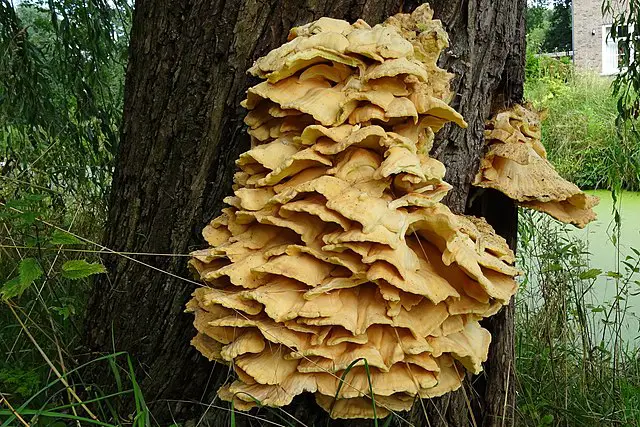Imagine strolling through the woods and stumbling upon a bright, golden-orange fungus growing on a tree. It’s thick, meaty, and surprisingly familiar. This isn’t just any mushroom—it’s Laetiporus, better known as “chicken of the woods.” Unlike most mushrooms, which have an earthy or umami taste, this one mimics the flavor and texture of chicken so well that foragers and chefs alike swear by its uncanny resemblance to poultry.
The Forest’s Culinary Surprise
Laetiporus is no ordinary fungus. With its vibrant color and layered, fan-like structure, it stands out in the wild. More than just eye-catching, it’s a prized edible mushroom with a firm, juicy texture that shreds apart much like cooked chicken breast. When sautéed, it releases an aroma that’s oddly similar to fried chicken, and its taste, often described as slightly lemony and rich, makes it a top-tier meat substitute for vegetarians and food lovers alike.

Where and How to Find It
Chicken of the woods isn’t grown in grocery store aisles—it’s a wild delicacy. Typically found on decaying hardwood trees like oak, cherry, and beech, it thrives in late summer and early fall. It grows in thick, overlapping shelves and can reach impressive sizes. While foraging, it’s crucial to identify the right species, as some lookalikes can be harmful. The best specimens are young, tender, and growing on non-toxic trees. If you ever spot a fresh cluster, consider yourself lucky—it’s a rare but rewarding find.
A Mushroom with History
For centuries, foragers and indigenous communities have harvested chicken of the woods as a staple protein alternative. Its ability to absorb flavors and its naturally meaty consistency have made it a cherished ingredient long before plant-based meats became popular. Historically, it has also been used in traditional medicine, with some studies suggesting potential antibacterial and immune-boosting properties.
Cooking Up a Feast
Once harvested, the culinary possibilities are endless. Chicken of the woods can be grilled, fried, baked, or added to soups and stews. Its firm texture holds up well in almost any dish where chicken would typically be used. Whether battered and deep-fried for a crispy “fried chicken” experience or sautéed with garlic and herbs for a simple yet flavorful meal, this mushroom never fails to impress. However, it’s always important to cook it thoroughly, as some people may have mild allergic reactions when eaten raw.
Nature’s Gift to Food Lovers
For those seeking a sustainable and natural meat alternative, chicken of the woods is a true treasure. Its wild nature, incredible taste, and versatility in the kitchen make it a sought-after ingredient among chefs and home cooks alike. The next time you take a walk through the forest, keep an eye out—you might just find nature’s most unexpected fried chicken growing on a tree.

